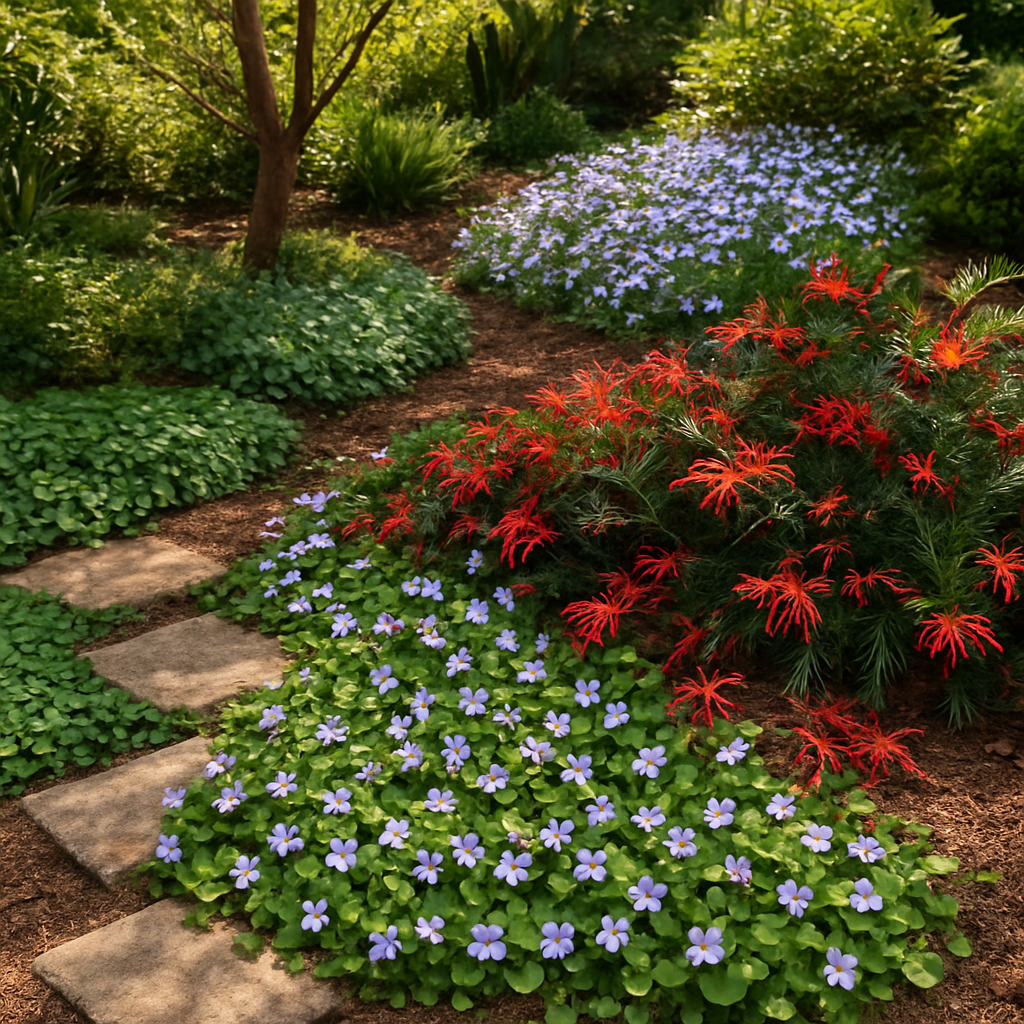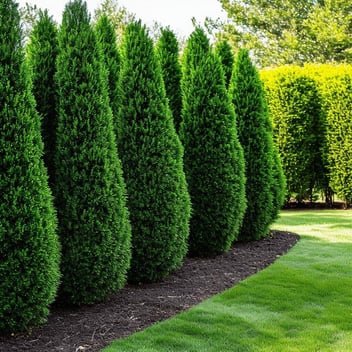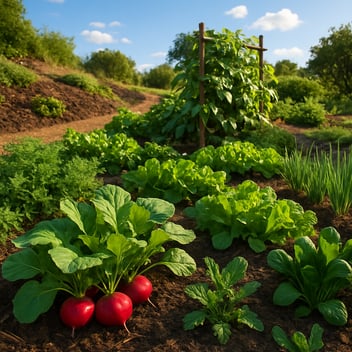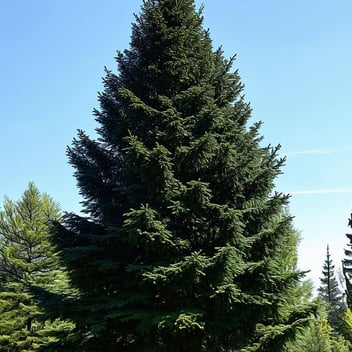Fast‑Growing Groundcovers for Instant Impact
Introduction
Gardens with bare patches or freshly cleared soil often look unfinished. Instant ground cover transforms those blank spaces into lush green carpets. Fast‑growing groundcovers provide rapid gratification and functional benefits, like erosion prevention and weed suppression. In South East Queensland (SEQ) with its warm, often humid climate, selecting groundcovers that grow quickly is both art and science.
The Need for Instant Ground Cover in Gardens
Those spaces between shrubs, the bare slopes, or between stepping stones—they call for groundcovers that establish fast. Fast coverage makes a garden feel more complete. It also helps prevent weeds taking over, and keeps soil moist and cool.
What Makes a Groundcover “Fast‑Growing”
Fast growth depends on spreading habit (trailing stems, rooting runners), favourable climate (warm, moist), soil that drains well, and enough nutrients. Plants that root as they creep are often fastest. Also those native or well adapted to SEQ’s conditions tend to outperform exotic species in speed and resilience.
Key Considerations Before Choosing
Sun vs Shade Exposure
Match the groundcover to the light conditions. Full sun needs different species than deep shade. In SEQ, midday sun can be harsh; many fast growers burn if shade is insufficient. Know your site before planting.
Soil Quality & Drainage
Even the fastest groundcover will struggle in heavy clay or water‑logged soil. Soil pH, drainage, organic matter all matter. Amend soil if needed. Let water drain, but retain enough moisture for roots to develop.
Foot Traffic & Wear
Groundcovers under walking paths, near patios, or children’s play areas need to be tough. Some plants tolerate light foot traffic, others weep or get damaged. Decide how you’ll use the space and choose accordingly.
Top Fast‑Growing Groundcovers for SEQ
Australian gardens already have some champion species.
Australian Violet (Viola hederacea)
Delicate, charming. Forms a soft carpet. Fast‑spreading under favourable shade conditions. Blooms in purples and whites. Great between pavers, under trees.
Dichondra repens (Kidney Weed)
Tiny round leaves, mat‑forming, sends out runners. Very quick to fill spaces. Loves moist soil with some sun to dappled shade. Excellent for lawn replacement in low‑traffic zones.
Grevillea ‘Bronze Rambler’
A native groundcover that spreads vigorously and offers striking colours. Does well in full sun. Drought hardy once established. Helps with weed suppression and attracting birds.
Scaevola albida (Mauve Carpet)
A mat‑forming species with fan‑shaped mauve/blue flowers. Spreads well over slopes, sandy ground, in sunny spots. Provides good coverage quickly and has pleasing seasonal flowering.
How to Plant for Speedy Establishment
Proper Site Preparation
Remove existing weeds and roots. Loosen soil to allow runners or spreading stems to embed. Add organic compost. Ensure good drainage to reduce risk of water-logging.
Planting Techniques for Maximum Spread
Plant plugs or small plants slightly closer than usual. Encourage runners by pinning trailing stems. Use thick planting where quick spread is needed. Water well initially.
Mulching and Watering to Jump‑Start Growth
Mulch retains moisture and keeps soil cooler. Water regularly until plants root deeply. After establishment, reduce frequency, but ensure dry periods don’t stress young growth.
Maintenance Tips to Sustain Coverage
Light Pruning and Trimming
Trim back runners that go out of bounds. This encourages denser growth. Also removes older leaves to allow fresh growth. Keeps plant looking neat.
Fertilisation Strategies
A light, balanced fertiliser in early growth phases helps speed. After groundcover is dense, reduce fertiliser to avoid overgrowth or leggy appearance. Slow release works well.
Controlling Weeds and Pests
Fast growers can still leave gaps or be infiltrated by weeds. Remove weeds early. Watch for pests that like dense foliage (slugs, snails, fungal issues). Good airflow helps minimise disease.
Design Ideas for Instant Impact
Mixing Textures and Colours
Combine groundcovers of different leaf shapes and flower colours. A contrast between fine foliage (like Dichondra) and broader leaves (Violet) adds visual drama. Seasonal blooms introduce bursts of colour in between green.
Spreading Over Slopes and Banks
Sloped ground is prime territory for fast‑spreading mats. Use groundcovers to stabilize soil, prevent erosion. Choose species that take well to slope and sun exposure.
Between Pavers, Edges, and Walkways
Fast growers that creep between stones soften edges. They suppress weeds in those cracks. Provide a charming transition from hardscape to planting beds.
Potential Pitfalls & How to Avoid Them
Overgrowth & Invasiveness
Some fast‑growing groundcovers, if unchecked, may become invasive or encroach where unwanted. Define edges, use barriers, prune regularly.
Water Stress in Dry Periods
Despite fast growth, many need consistent moisture when establishing. Drought can stall spread or kill new shoots. Plan for watering support or use drought‑tolerant species.
Disease and Fungal Risks
Dense mats can trap moisture and reduce airflow, fostering disease. Ensure spacing, prune to open up growth, water early in day so foliage dries before night.
Conclusion
Bare garden patches need no longer wait for years to look good. By choosing fast‑growing groundcovers like Australian Violet, Dichondra, Grevillea ‘Bronze Rambler’, or Scaevola albida, you can achieve lush coverage in months. Pair that with good installation and care, and your garden transforms with immediate impact. Balance speed with wise design and sustainability.




